The interior looks quite stylish, original, as it has a matte or glossy surface, as well as a variety of textures and ornaments. This material is used for finishing walls, ceilings, kitchen aprons and is widely used in the design of the living room and bathroom.
Advantages of tiles in the interior
Ceramic tile in the interior, the photo of which shows all the beauty of the material, has many advantages, among which one should distinguish such as:
- wear resistance;
- thermal conductivity and fire resistance;
- practicality;
- hygienic and hypoallergenic;
- ease of care;
- resistance to ultraviolet light;
- ease of care;
- stylish design.
The tile does not lose its attractiveness and durability even under heavy load, it does not bend or deform. The flooring will last for 40-50 years, and on the walls much longer. Another indicator is heat conduction and fire resistance. Tile in the interior is not afraid of high temperatures, in case of fire smoke and toxic compounds are not released. This product is used for finishing fireplaces. Due to good thermal conductivity in the interior is used for the arrangement of warm floors.
When exposed to sunlight, the coating does not change its color and does not burn out. This product is quite simple to clean, so it is enough to wipe the surface regularly with a damp sponge. The tiles can be matte and glossy, embossed and smooth, as well as various shapes. The ability to simulate various natural texture allows you to make ceramics a universal product for absolutely any design.
Popular types of tiles
Ceramic tiles in the interior is considered the most the best option, as it allows you to emphasize the sophistication of the room. There are several popular types of tiles, in particular such as:
- made of porcelain;
- made of granite;
- cotto;
- clinker;
- majolica.
Tiles made of porcelain are characterized by a high degree of strength, which is why it is often used as a floor covering. Its surface is very easy to clean from any contamination. strong enough, resistant to moisture, alkalis and acids. This option is ideal for wall finishing in kitchens, bathrooms and hallways.
Clinker tiles are a product with a strong base, which is resistant to abrasion. This product is resistant to mechanical stress and chemicals. It does not absorb moisture, it is well cleaned. This tile is used for flooring. It is produced by extrusion, which is why it is possible to obtain absolutely any shape in the form. The cotto tile has a porous structure and is usually not covered with enamel. The color scheme contains natural terracotta shades. Such a tile is produced in the form of rhombuses, squares, hexagons. Basically it is used as a floor covering.
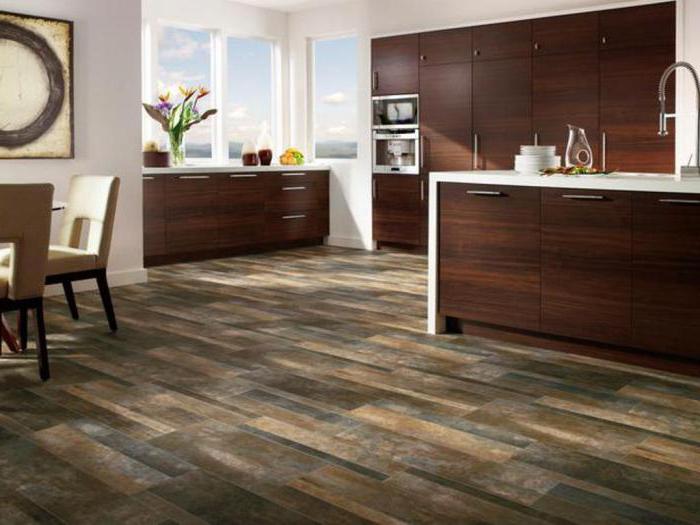 Ceramic granite is a frost-resistant material, which is comparable in strength to only natural granite. This product is not afraid of excessive moisture, aggressive chemicals, It does not require special care.
Ceramic granite is a frost-resistant material, which is comparable in strength to only natural granite. This product is not afraid of excessive moisture, aggressive chemicals, It does not require special care.
Basic stylistics of ceramic tiles
Ceramic tiles "Uralkeramika" in the interior looks very stylish, elegant and allows you to embody a variety of design solutions. These products just perfectly fit into the room, made in a classic style. Basically, two main background colors are used. A variety of decorative elements will help to make a variety in this decoration.
Original will look like a tile, imitating the texture of natural materials. Its design can include uneven edges, a slight roughness. This product is perfect for decorating in an antique style, loft or vintage.
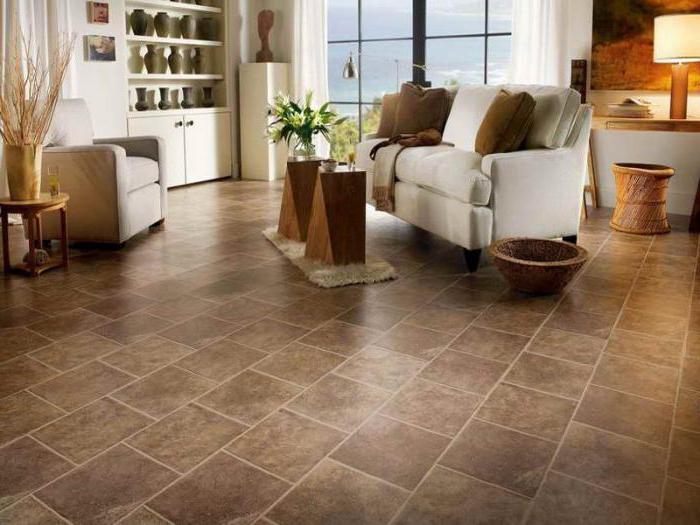 An ethnic style that emphasizes the national characteristics of a particular country looks interesting. Great demand is for tiles made in the style of Japanese minimalism. No less popular is styling under embroidered or decorated with various hieroglyphs and texts in a foreign language. It will be interesting to design in an African style, represented by contrasting shades and appropriate ornamentation.
An ethnic style that emphasizes the national characteristics of a particular country looks interesting. Great demand is for tiles made in the style of Japanese minimalism. No less popular is styling under embroidered or decorated with various hieroglyphs and texts in a foreign language. It will be interesting to design in an African style, represented by contrasting shades and appropriate ornamentation.
Beautiful and stylish look floral ornaments and marine themes. If you need a more relaxed theme, then the style of Provence is perfect. It is characterized by light pastel tones, gentle compositions, blurred studies, reminiscent of watercolor drawings.
What you need to consider when choosing a tile
When choosing a ceramic tile, you need to take into account not only the color combination, texture and picture of the product, but also the quality of the products. To determine the quality of the tiles, you need to study the information from the manufacturer on the product packaging. In particular, when choosing a tile, you need to take into account such characteristics as:
- manufacturer country;
- series;
- tone and caliber;
- grade and dimensions.
Buying a few packages of tiles, it is necessary to compare all these characteristics. They must necessarily coincide.
Bathroom and toilet interior
With the help of ceramic tiles, the bathroom interior will look just fine, the most important thing is to choose the right color combination and design of the product. Often, the decoration of the bathroom and toilet is quite ordinary ceramics. The wear-resistance class can be limited to the 2nd-3rd category. In terms of design, there are absolutely no restrictions, so you can put into reality any idea.
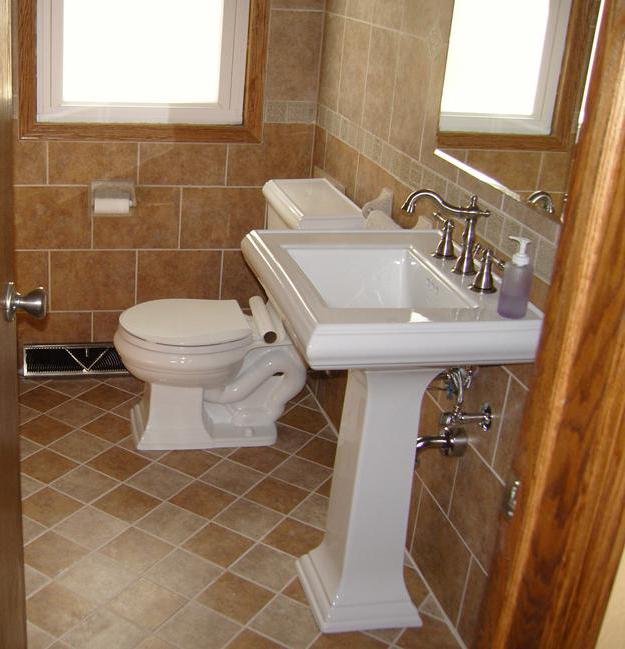 The standard option is to use a small square tile for flooring, as well as rectangles for walls. The form and design of the toilet largely depend on the area of the room. In terms of the design of bathroom tiles, there are absolutely no restrictions. The ceramic tile "Bryn" in the interior, especially its contrast combination in one color scale, looks original and stylish. You can simply make the bottom darker, and the top light. The most popular colors for the design of the bathroom can be such as:
The standard option is to use a small square tile for flooring, as well as rectangles for walls. The form and design of the toilet largely depend on the area of the room. In terms of the design of bathroom tiles, there are absolutely no restrictions. The ceramic tile "Bryn" in the interior, especially its contrast combination in one color scale, looks original and stylish. You can simply make the bottom darker, and the top light. The most popular colors for the design of the bathroom can be such as:
- blue-blue;
- sand and turquoise;
- peach and pink;
- white and red.
More unusual options can be a combination of gold and black, rich berry shades, as well as bright colors. For a small bath perfectly fit bright colors.
Kitchen tile decoration
Stylish ceramic tiles in the interior of the kitchen look pretty stylish, and you can decorate the floor and walls of the room. For flooring, porcelain stoneware is often used. This material is characterized by high resistance to mechanical damage, and also looks great. For walls it is best to use ordinary ceramics. Basically, the apron is trimmed around the work surface.
Ceramic tiles in the interior of the kitchen can be made in completely different colors. White is considered to be universal, however, to create a colorful interior, you should not limit yourself to only one color palette. You can just make bright accents in the interior or add a one-tone tile pattern.
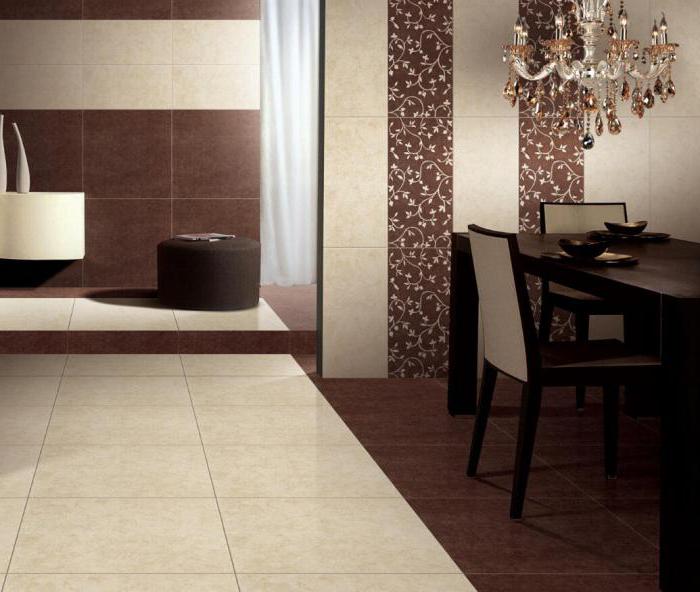 Very beautiful looks a complex composition, imitating a panel. In this case, individual tiles will create a complete picture. For the floor, mostly beige shades are used. In addition, the popular is the imitation of marble, stone and wood.
Very beautiful looks a complex composition, imitating a panel. In this case, individual tiles will create a complete picture. For the floor, mostly beige shades are used. In addition, the popular is the imitation of marble, stone and wood.
Wall decoration with ceramic tiles
Brina ceramic tiles in the interior, the photo of which allows you to evaluate all the advantages of this product, looks simply superb. In addition, the great advantage of such a product is that it is possible to choose absolutely any option, since the tiles are represented in the widest color range. Such a tile is ideal for wall cladding. It is best to choose products with a glossy surface, since they are more practical. On the glossy surface, soap stains are almost indistinguishable, as well as stains from water. The size of the wall tiles must be chosen in accordance with the area of the room.
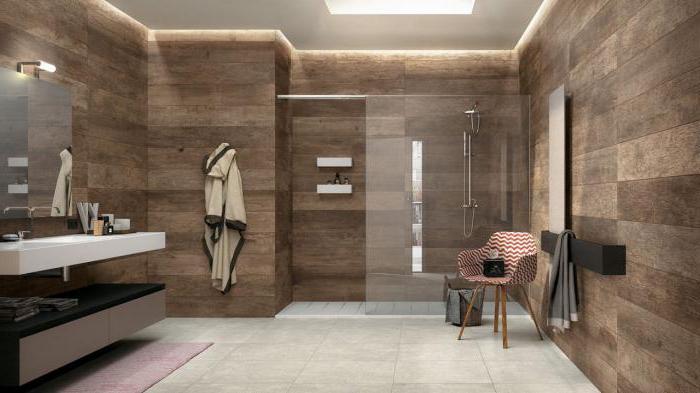 With a ceramic tile "Breen" interior, photo of which can be assessed personally, will play with completely new colors.
With a ceramic tile "Breen" interior, photo of which can be assessed personally, will play with completely new colors.
How to choose a floor tile
Ceramic floor tiles much thicker than the one used for walls. In addition, it is worth considering that this product is divided into several types, in particular such as:
- thin;
- conventional;
- extra strong tile.
Thin floor tiles can be mounted on an old ceramic coating, as it is light enough and with slight unevenness on the ground there will be no unevenness.
Fashion trends in the interior
To date, the style of minimalism is gradually disappearing, which is successfully replaced by a mixture of styles, eclecticism, as well as a special complexity, intricate design, bright colors.
 The main trend is creativity, which is combined with extravagance, innovative technologies. Widely used natural materials, unusual shapes, complex intricate ideas.
The main trend is creativity, which is combined with extravagance, innovative technologies. Widely used natural materials, unusual shapes, complex intricate ideas.
Stylish and unusual looks porcelain in combination with a mirror surface, cork, metal and glass.
Disadvantages of ceramic tiles
Ceramic tiles in the interior looks just fine, but this product has certain drawbacks, among which one should distinguish such as:
- when installing a tiled floor, you need to strengthen the soundproofing;
- fragility and fragility during installation;
- some preliminary preparation of walls and ceiling is required.
With the right approach to the selection of the facing material, its type and installation, it is possible to make simply an excellent interior, which is suitable for all queries.
One of the most popular types of interior cladding is ceramic tile. Possessing attractive advantages of aesthetics and functionality of finishing tiles, ceramics are still democratic in value. The assortment of forms, color solutions of ceramics and shapes is incredibly diverse. You can be sure that the offers of modern stores for the sale of ceramic tiles, can meet the needs of even the most demanding and skeptical buyers with different financial capabilities, stylistic and color preferences. Traditionally, ceramic tiles have been used more for functional reasons in places with high humidity - bathroom, swimming pools; and places with active patency - facing of staircases, hallways.
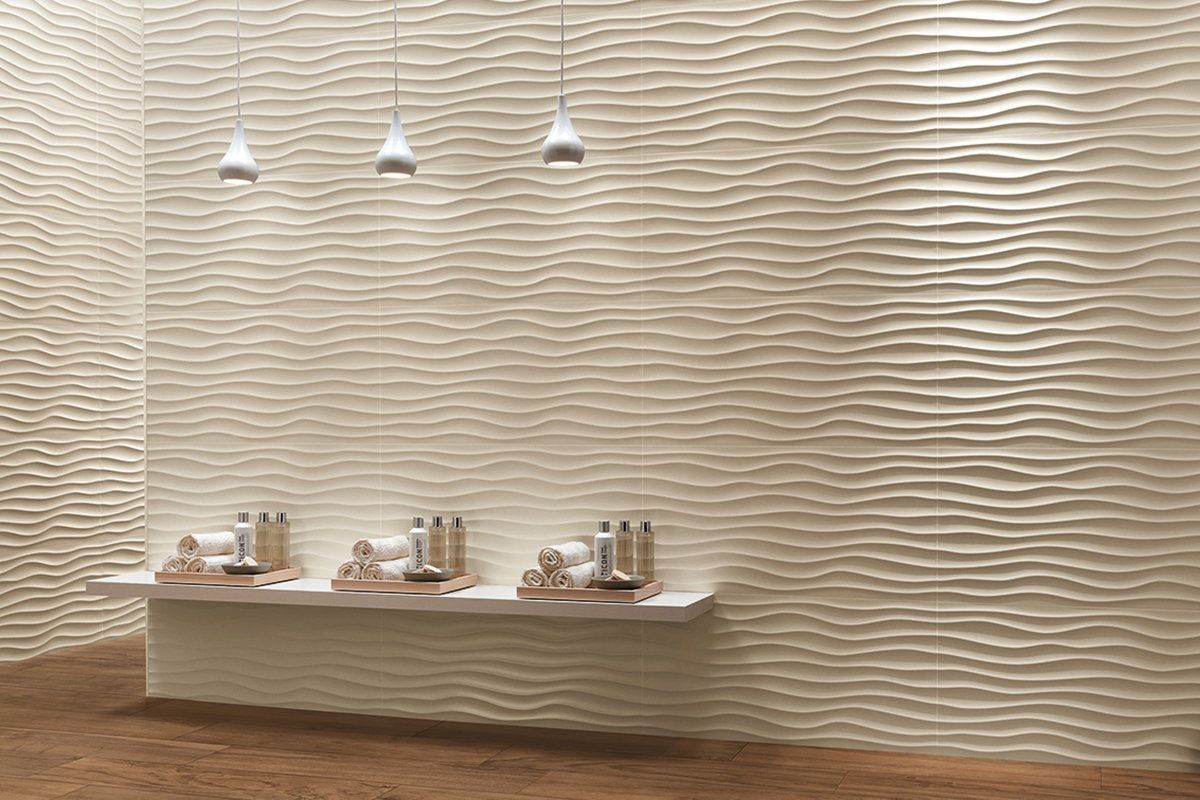
In connection with the active demand of designers, the number of offers has also increased. AT modern interiors it is very important to have large-scale relief tiles for facing the accent wall, while the rest of the surfaces are made in calmer shades and noble materials. Ceramic tiles "Cotto" brick color is made of red clay and often do not use glazing. A range of complex terracotta shades, brings to the interior of the room a note of originality, naturalness and originality. Especially designers from Europe liked the tile "cotto" due to its natural color and noble warmth.
Mosaic in the interior
Possessing all the positive properties of ceramic tiles, the mosaic faithfully serves as a finishing material directly for complex surfaces, without which sometimes you can not do in the bathroom. For example, it is recommended to revet a built-in sink or acrylic bath, finish the niche with shelves or arches, to frame the mirror or countertop under the sink.
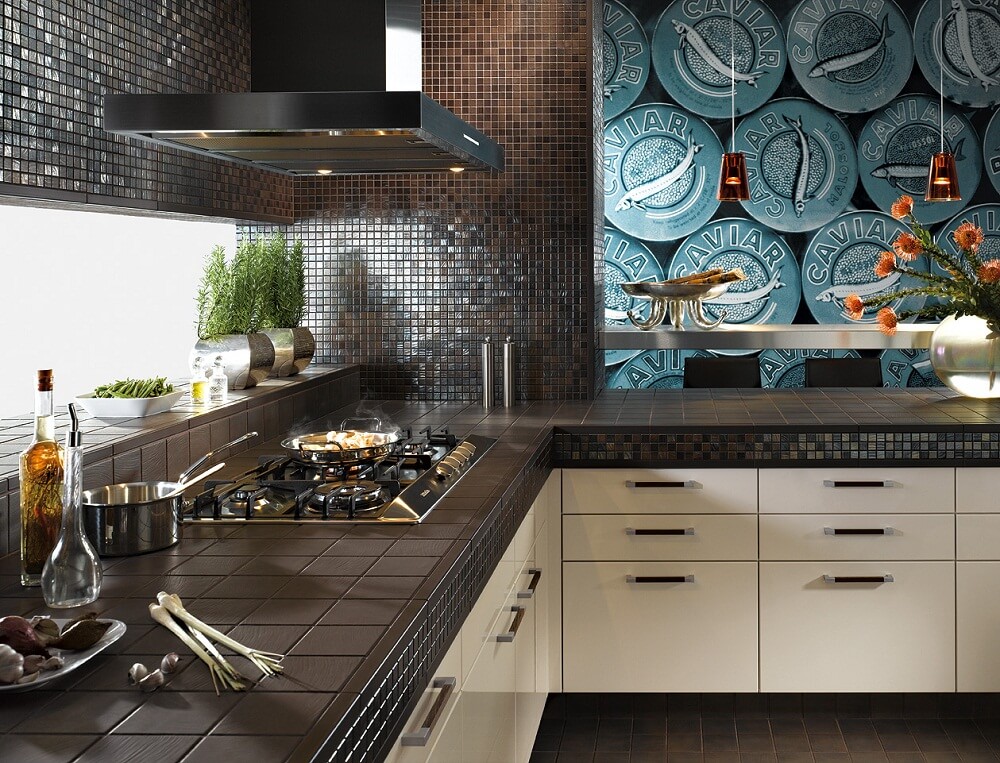
Porcelain in the interior
Ceramic granite, possessing all enviable advantages of ceramics, is strengthened to the same qualities of durability, wear resistance and frost resistance. Ceramic granite is capable of withstanding heavy loads, falling of weighty objects and various mechanical influences. Often, it is available as floor tiles in small or large degree with surface roughness to prevent slipping. Along with the floor there are models directly for facing the walls.
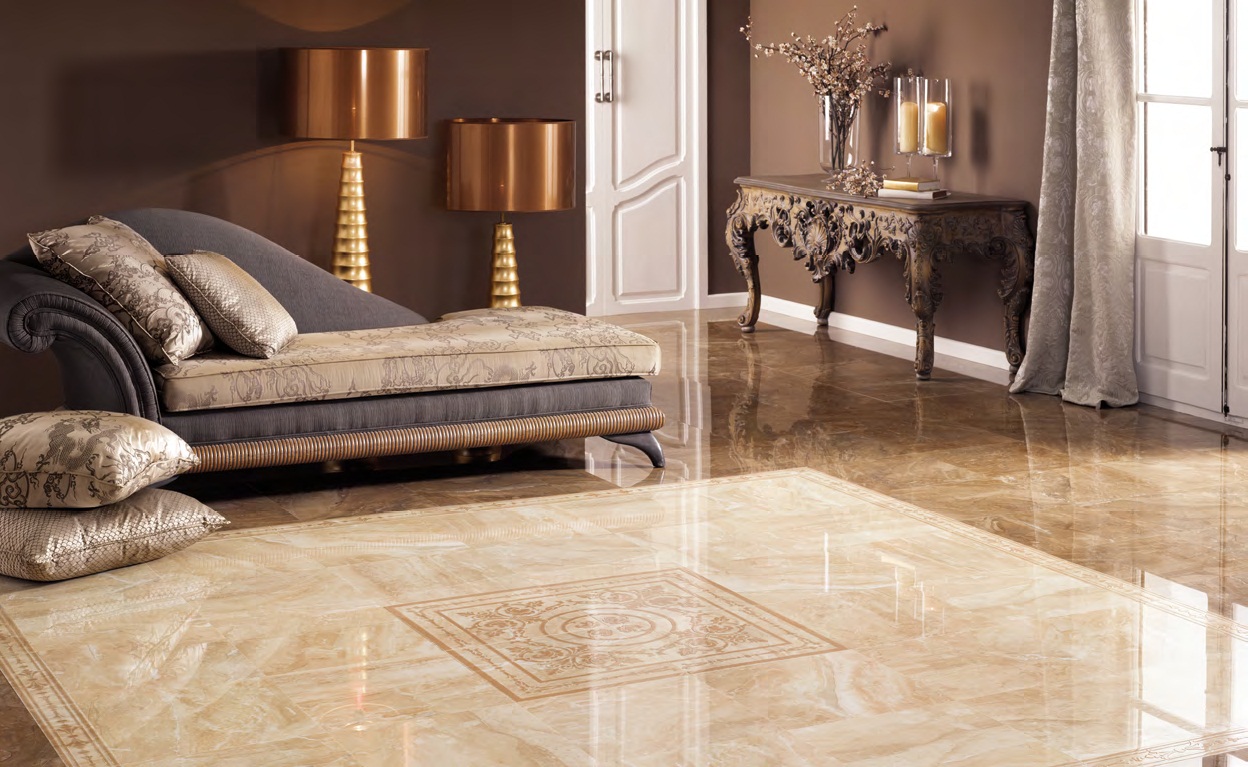 During the production of porcelain stoneware, raw materials are used which are close to what is used to create porcelain by their composition, but of course such products still resemble stone. It should be noted that granite has the least water absorption among its keramosobrates. He is in the highest group for resistance to abrasion and aggressive environments, demonstrating their qualities both indoors and outdoors.
During the production of porcelain stoneware, raw materials are used which are close to what is used to create porcelain by their composition, but of course such products still resemble stone. It should be noted that granite has the least water absorption among its keramosobrates. He is in the highest group for resistance to abrasion and aggressive environments, demonstrating their qualities both indoors and outdoors.
 Classic non-glazed porcelain tiles have a granular structure throughout the entire thickness of the tile, as well as that of natural stone, but differs from the latter in that it lacks undesirable minute depressions and pores. The result is a structure that is not prone to cracking. Because of the considerable homogeneity and density, than the natural stone, porcelain granite is ahead of it by several technological characteristics, for example, by its resistance to temperature regimes. Glazed porcelain stoneware has very high technical characteristics, and thanks to the glaze with which many surface colors are obtained, granite has a wide range of multi-faceted color palette and an ingenious ability to print. At the moment, the print "under the laminate", large dies with an image imitating various types of wood, in natural form or in whitened variation, has become popular, depending on the style of the room.
Classic non-glazed porcelain tiles have a granular structure throughout the entire thickness of the tile, as well as that of natural stone, but differs from the latter in that it lacks undesirable minute depressions and pores. The result is a structure that is not prone to cracking. Because of the considerable homogeneity and density, than the natural stone, porcelain granite is ahead of it by several technological characteristics, for example, by its resistance to temperature regimes. Glazed porcelain stoneware has very high technical characteristics, and thanks to the glaze with which many surface colors are obtained, granite has a wide range of multi-faceted color palette and an ingenious ability to print. At the moment, the print "under the laminate", large dies with an image imitating various types of wood, in natural form or in whitened variation, has become popular, depending on the style of the room.
Glass tiles in the interior
 The elements of the bathroom, faced with glass tiles, have a unique and beautiful appearance. But the glass finish imparts a certain coldness to the situation in the bathroom. Such decoration is organized in the form of tinted glass, but there are variants with the image of various subjects, so-called photo printing. Producers are happy to fulfill any of your wishes for an appropriate reward. Note that the glass tiles can be smooth and textured. But behind the textured surface it is somewhat more difficult to follow, and the visual effect far outweighs minor inconveniences in use.
The elements of the bathroom, faced with glass tiles, have a unique and beautiful appearance. But the glass finish imparts a certain coldness to the situation in the bathroom. Such decoration is organized in the form of tinted glass, but there are variants with the image of various subjects, so-called photo printing. Producers are happy to fulfill any of your wishes for an appropriate reward. Note that the glass tiles can be smooth and textured. But behind the textured surface it is somewhat more difficult to follow, and the visual effect far outweighs minor inconveniences in use.
Tiles made of natural stone
Granite, marble, less often basalt serve as raw material for the production of natural stone tiles. Due to the very high price of natural material (mostly marble), manufacturers of modern ceramics for finishing different rooms offer a huge range of artificial imitation of natural stone. Externally, it's incredibly difficult to distinguish an artificial product from a natural one, but the differences are based on technological characteristics.
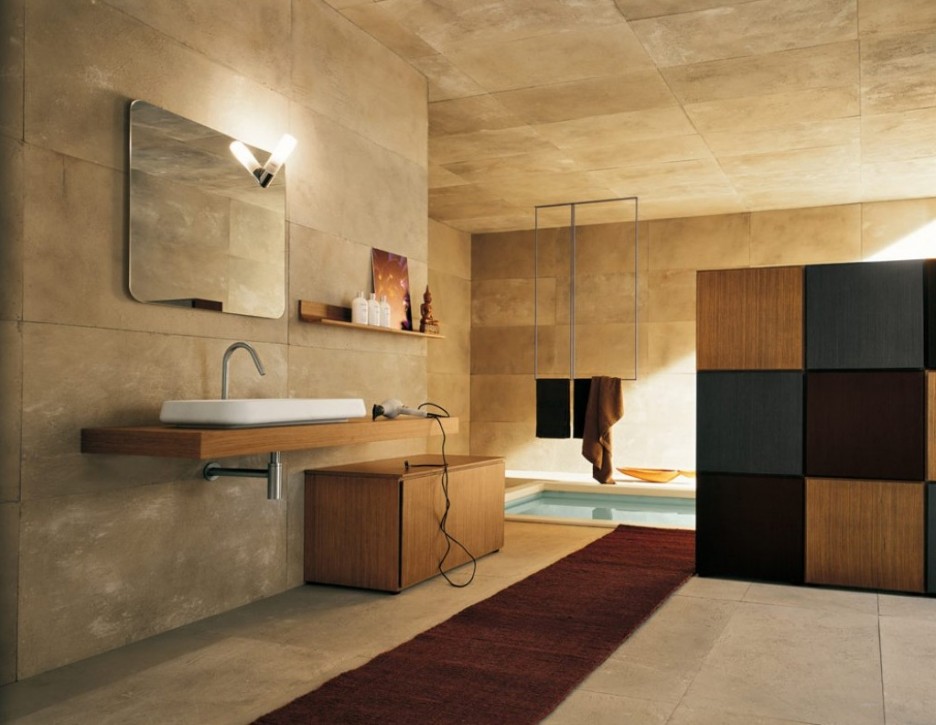 The artificial material before natural has one weighty advantage (without taking into account the cost) - it is much easier and convenient to install.
The artificial material before natural has one weighty advantage (without taking into account the cost) - it is much easier and convenient to install.
How to choose a tile size for a bathroom
Having defined the type of tiles, you need to pay attention to the dimensions of the dies. This will depend directly on the area, the complexity of the geometry of the surfaces, and the shape of the room where the finish will take place. When the matched material corresponds to the dimensions and architectural features of the bathroom, the waste will therefore be significantly less for as much as the financial cost. Correctly matched tile size helps to reduce the number of seams, and the room will be co-scale, which is very important for visual perception.
Now the use of large-sized ceramics is becoming more popular, because the larger the size of the tiles, the fewer seams that contribute to fast installation, but this approach is appropriate not in all interiors. If the surfaces of your room have many bends, columns, or niches, then in this case a tile of a small size or a mosaic will do. Now, for the cladding of the wall surfaces, designers began to use the active porcelain stoneware, which was previously intended solely for sex.
For the originality of the interior of the bathroom, as well as for significant budget savings, it is common to use different variations of the tile, combining them in both the color palette and the most suitable tile sizes for a certain surface.
Clinker tiles in the interior
Clinker tiles basically it is used for facing street showers, public and private pools. Extrusion, thanks to which the clinker is created, allows to provide products of complex geometry. Therefore, manufacturers often offer complete sets for facing non-standard surfaces of niches, corners, holes for cranes and other attributes for procedures in the bathroom.
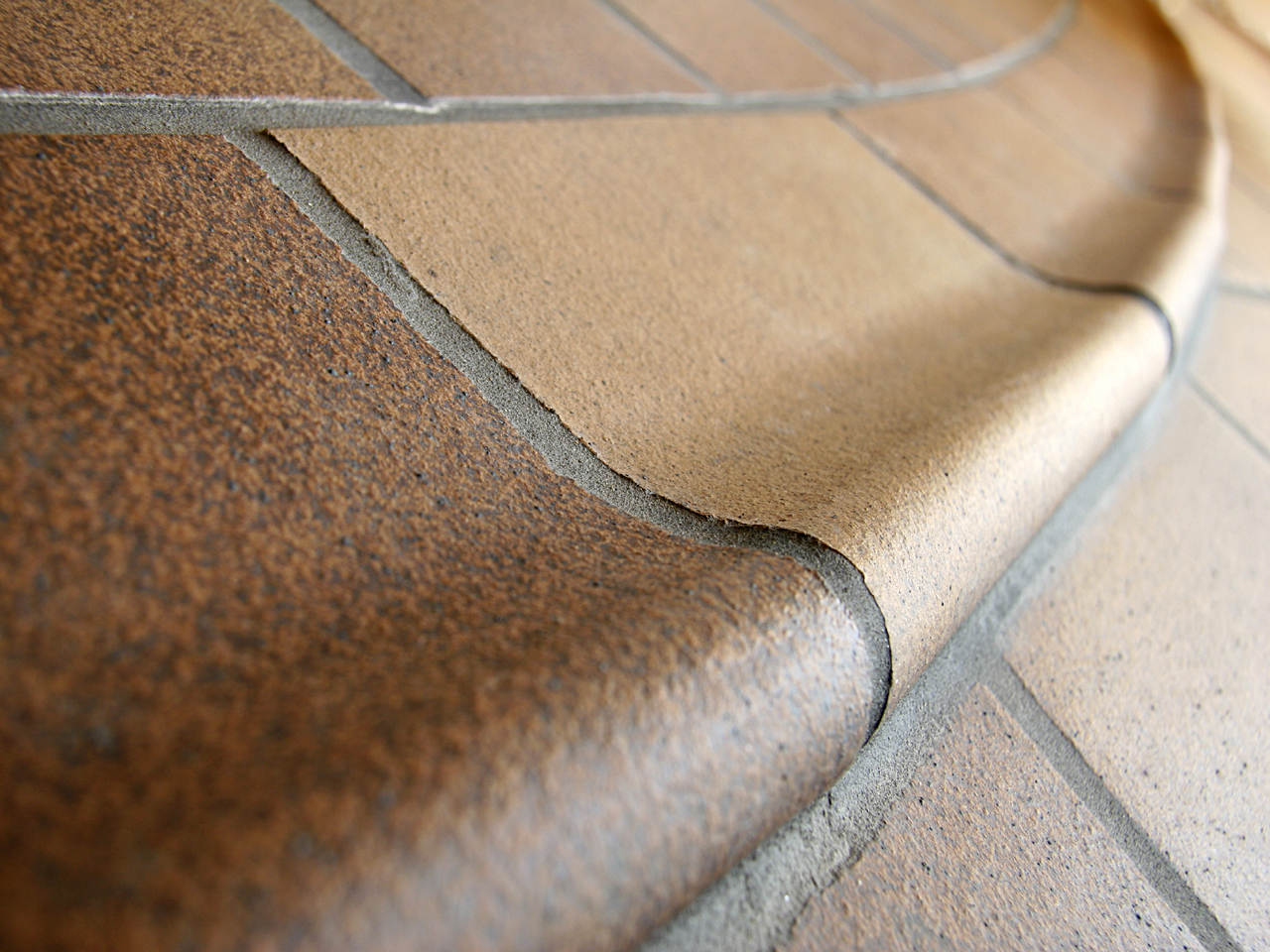 By placing the tile in a vertical fashion, you achieve a visual increase in the height of the ceiling of your room. With a horizontal arrangement, the total area of the bathroom visually increases.
By placing the tile in a vertical fashion, you achieve a visual increase in the height of the ceiling of your room. With a horizontal arrangement, the total area of the bathroom visually increases.
Colors of the bathroom
The most difficult choice, due to the incredibly rich assortment finishing material - is the selection of colors. It all depends on the personal wishes and dimensions of your bathroom. It is known that a bright range contributes to a visual increase in space (in many standard apartments this issue is very relevant).
Many mistresses are afraid to perform the facing of the bathroom in snow-white tones, being afraid of increasing the time spent on cleaning the surfaces. Directly in practice, it turns out that the main hindrance to gloss and fresh purity of the ceramic facing is a light coating left by drops of water. But on a light, surface, it is almost invisible, which obviously can not be said about the dark tones of the finishing material. 
For fans of bold bright colors, ceramic and mosaic manufacturers demonstrate a large selection of colorful, saturated color samples. But deciding on a bold step to finish the bathroom in the desired scarlet color, imagine that in this red room you will have to take a bath for a long time (a similar repair is created, as they say for centuries). Maybe you will limit yourself to only one bright wall chosen as an accenting element. Or you can use the favorite bright color as a curb pattern, to highlight the significant segments of the room. You can emphasize the frame of the mirror in a colorful design. You can also emphasize the shape of the bath or the facade of the sink or lay out an ornamental ceramic panel on the wall.
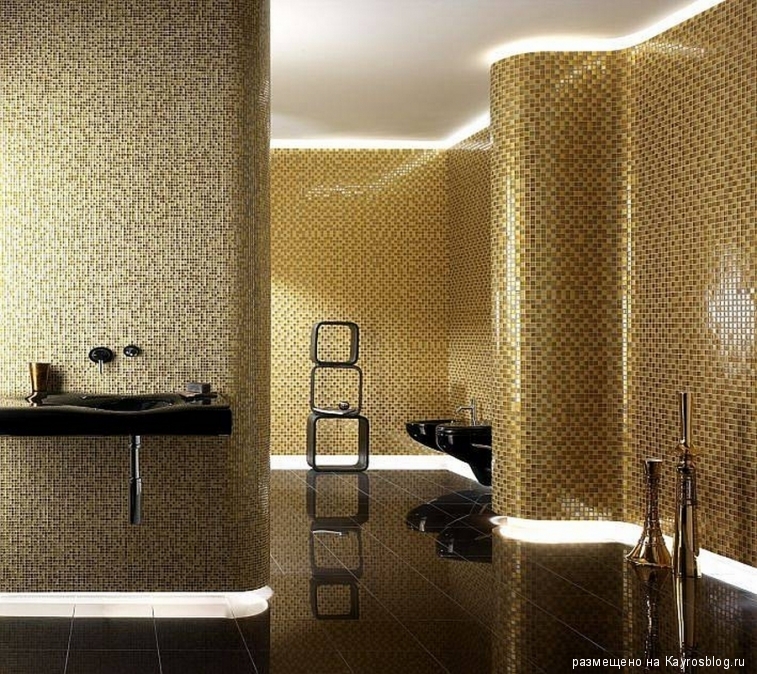 To decorate ceramic tiles with an image or ornament, it is worth approaching carefully. Cladding of all four walls of the bathroom with the help of ceramics with a motley pattern can lead not just to a visual reduction in the dimensions of the bath room, but also to the psychologically restless stay in it. Again, it is recommended to use a motley, bright pattern as accenting elements, dosed and locally.
To decorate ceramic tiles with an image or ornament, it is worth approaching carefully. Cladding of all four walls of the bathroom with the help of ceramics with a motley pattern can lead not just to a visual reduction in the dimensions of the bath room, but also to the psychologically restless stay in it. Again, it is recommended to use a motley, bright pattern as accenting elements, dosed and locally.
 Demonstration of the accent wall in the form of a panel with an ornament in the oriental style, will enrich the color variety in the room, and make it the most individual, personalized, not ordinary. A note of the Mediterranean style of your bathroom will help to express the edging with tiles with active blue ornaments, a bright panel on the wall or an image on the floor, laid out thanks to ceramics with intricate ornamentation of such a collection as MAINZU.
Demonstration of the accent wall in the form of a panel with an ornament in the oriental style, will enrich the color variety in the room, and make it the most individual, personalized, not ordinary. A note of the Mediterranean style of your bathroom will help to express the edging with tiles with active blue ornaments, a bright panel on the wall or an image on the floor, laid out thanks to ceramics with intricate ornamentation of such a collection as MAINZU.
The use of ceramic tiles in apartments until today was justified by the requirements of cleanliness and hygiene. Tiles laid out the most problematic sections of walls and floors in the premises, which require very thorough cleaning.
Ceramic tiles in the interior of modern apartments stepped outside the ancillary facilities and bathrooms. The diverse, often unusual design of modern ceramic tiles makes it possible to widely use it in any rooms of our dwelling.
Yes, and the composition of the tile has undergone significant changes. Now the tile is not just clay and water, it includes:
- metal in the form of impregnations or as an additive,
- glass,
- crystal,
- plastic,
- stone crumbs.
Modern manufacturers of tiles produce samples that can create the look of any finishing material, starting with a stone and ending with a cloth.
What styles of tiles are widely used
Ceramic tiles - the first material that began to change in accordance with the trends of new styles. Avoiding the "minimalism" habitually widely used tile, has occurred to the styles of "ethno", "Hi-tech", "country" and many others.
Modifying, the surfaces lined with tiles come in any style, showing themselves as a wooden paneling, then as a mirror of an irregular shape. In the interior of the bathroom tiles, created for the trendy style trends, can be a snake and crocodile leather, gold or a woven rug.
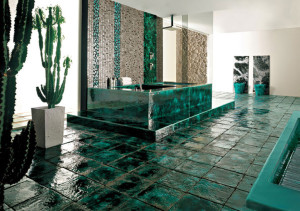
Porcelain tiles
This material is a technologically advanced creation of ceramists. This is an ideal cover for both residential and office space. He can withstand intense interaction with the soles of hundreds of feet in public places.
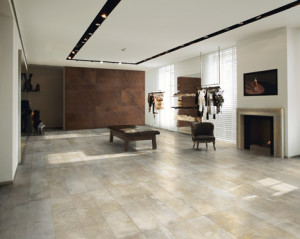
Ceramic granite perfectly tolerates any household chemistry and is able to represent both a parquet board and a natural stone.
Large samples
Large format tiles remain popular today. The rectified edge of the tile makes it possible to create a smooth seamless coating - a dream of any designer. Large format and edged edge of ceramic granite are used not only in the power of the floor, but also in the facing of the walls, creating a perfectly smooth mirror-smooth surface.
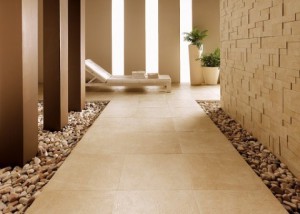
But the way of facing "rustic" is still the most popular in rural houses and in urban modern interiors. Large tiles are rarely stacked in this way. The floor, laid out by the way of "rustic" tiles under the stone, remains the most popular in country houses to this day.
Small tiles
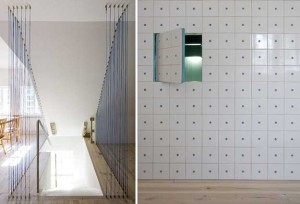
This is not necessarily a mosaic. Small tiles are good for laying kitchen aprons or small areas of floor, for example, the thresholds of the house. Rectangular tiles can be laid out in a French way apron kitchen, decorated in the style of "Provence". However, for the style of "Provence" fine is fine light tiles with sparse patches of colored glass tiles of bright colors.
Tree

This is a great way to lay the "parquet" in the kitchen and in the bathroom. Ceramic tiles, imitating a tree, decorate the room in a traditional style. Heated floors, so often used for bathroom furnishings, will look organic, being laid out with a tile under a tree.
Marble
Tiles stylized with marble surpasses natural materials with strength and a wide color range. It can be widely used in such styles as "neo-Greek", "roman" or "novorimsky". Ceramic tiles in marble, in such cases it will be possible not only to lay out the floor, but also to close the walls and, in part, the ceiling. The main condition for such styles is the edging edge of the tile, while the color of the artificial "marble" can be the most progressive.
Leather

Floor tiles in the interior can mimic not only marble or natural stone, but also the skin. Such a tile has a pronounced relief and is very good on the floor in rooms where it is easy to get injured. But, except for economic, it has excellent decorative properties. It can be used to wall sections of premises that are not designed for laying, such as a living room or bedroom. The styles "glamor" or "art deco" applaud the choice of such tiles. The main thing is not to overdo it.
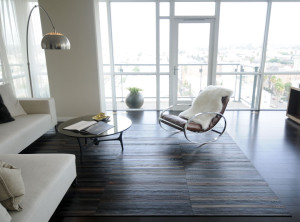
Flowers
At once it is necessary to make a reservation, that use of such tile can justify only the chosen style. "Renaissance" or "ethno" can include elements of the interior, laid out with tiles with stylized floral compositions or elements of ornament. Also, a flower can be depicted on one tile in the entire room - that is, on one piece, and best of all, if it's an antique tile pattern.
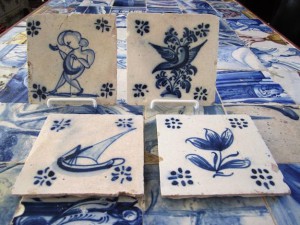
Geometric patterns
They are good for rooms, decorated in the styles of "Art Deco". Geometric patterns are able to hypnotize the person viewing them and use them in a limited amount.
To the geometric patterns can be attributed tiles in the style of "patchwork". This fun transformation of geometric patterns can decorate the room, decorated in the style of "country."
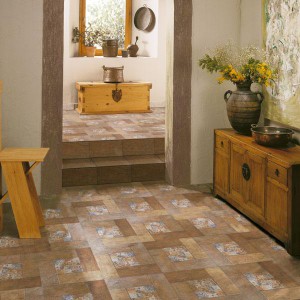
Mirror tiles in the interior
Mirror samples are great for small rooms. But in laying such a tile there is one subtlety. The tiles laid on opposite walls will reflect each other indefinitely, creating dark tunnels in opposite walls.
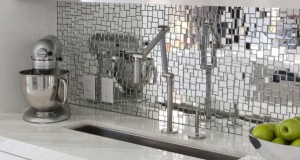
What here is "light and joy." Mirror tiles laid in the corners of the room on the walls, converging at right angles, will make the corners of the small rooms even darker - infinitely darker. Therefore, use mirror tiles in the interior it is necessary with caution. It will be good to have a mirror wall in the bathroom or in the dressing room.
Still relevant is the design of the tiles in the home interior. These facing materials are used for finishing walls, floors, other surfaces in each house. They are used to repair the bathroom, toilet, kitchen, sometimes a balcony and a hallway. Among the variety of available samples, it is difficult to find a suitable model. Consider existing options facing, this will help to make the right choice.
Differences of ceramics from porcelain stoneware
Most often, apartments use ordinary tiles. Ceramic tiles in the interior is found everywhere. This is not surprising, because it is affordable and also has the widest assortment.
Ceramics is made of clay with the addition of sand, mica and other minerals. To make it homogeneous and durable, firing is carried out. The front surface is covered with decorative glaze, enamel or other type of pigment. Thanks to this, it is possible to achieve a variety of products.
Over the past decade, you can increasingly see in the interior porcelain stoneware. This material has a number of differences in comparison with ceramics:
- Strength. This is one of the most durable facing materials, even point punch and long mechanical impact are not afraid of it.
- Density. Particles of charge are compressed to the maximum and are sintered together without forming a porous structure.
- Water resistant. This figure is almost one hundred percent.
- Great weight. Due to the high density, the mass of a unit also increases.
- Wear resistance. Not afraid of abrasion, contact with chemistry or ultraviolet.
The porcelain is made from a raw material similar to that of ceramics, but at the same time, the particles of the stone are added, which increases its strength and hardness. The firing temperature is brought to 1,300 degrees, and a great deal of additional pressure is applied. The surface has a natural appearance due to different technologies of mixing raw materials and feeding them. Using the colors, they achieve imitation of natural materials.
In the interior you can see clinker tiles. It is also manufactured by burning at high temperature and has great strength. It is expensive, therefore it is used less often. Basically - it's an imitation of stone or brickwork.
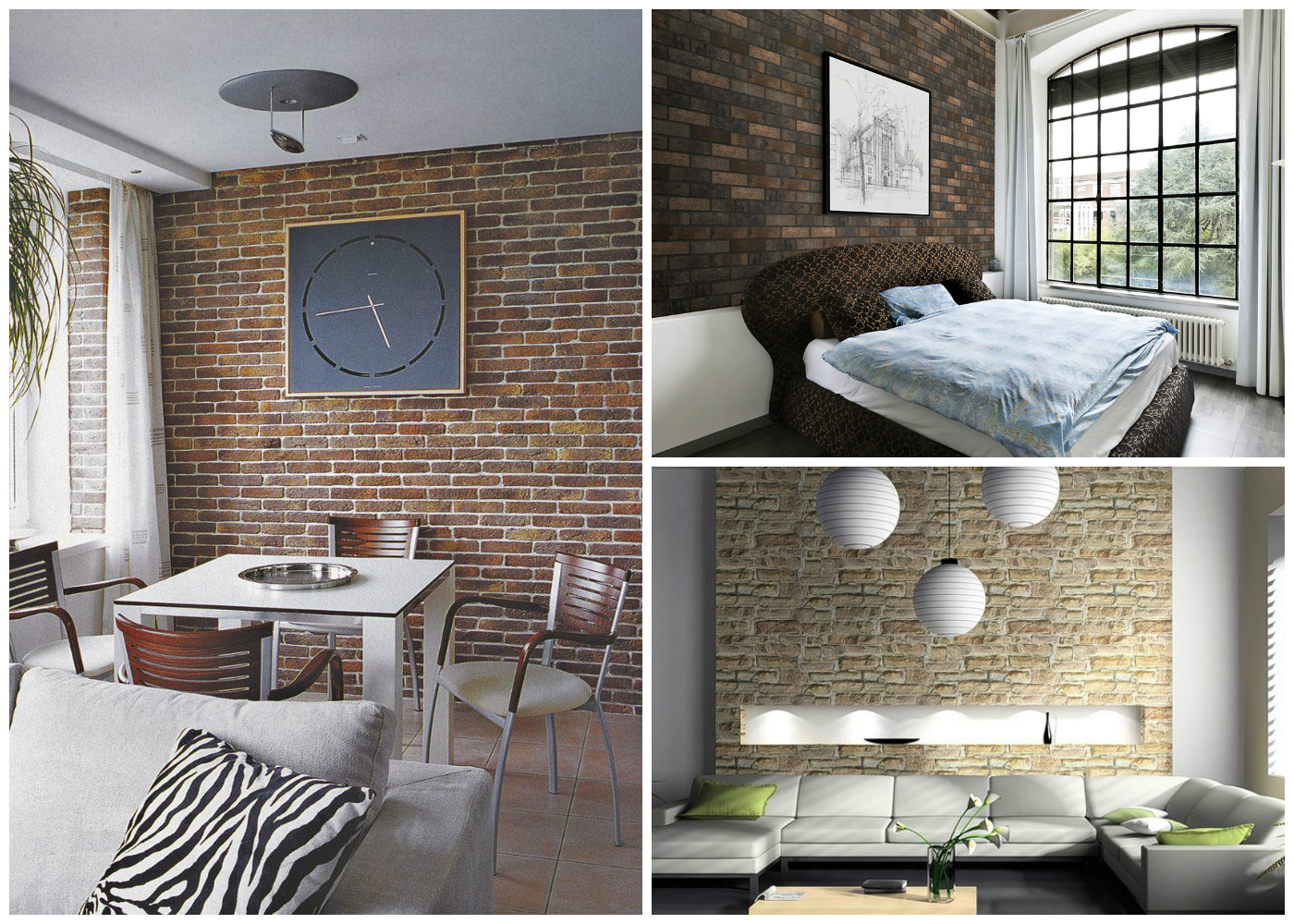
Options for decorating rooms with clinker
Types of products
When developing the design of ceramic tiles, different technologies and creative ideas are used. So, tile can have a glossy or matte surface, and porcelain tiles are distinguished by such models as lapatized and satin. In addition, the slice of the tile can be beveled (facet), rounded or straight (rectificate).
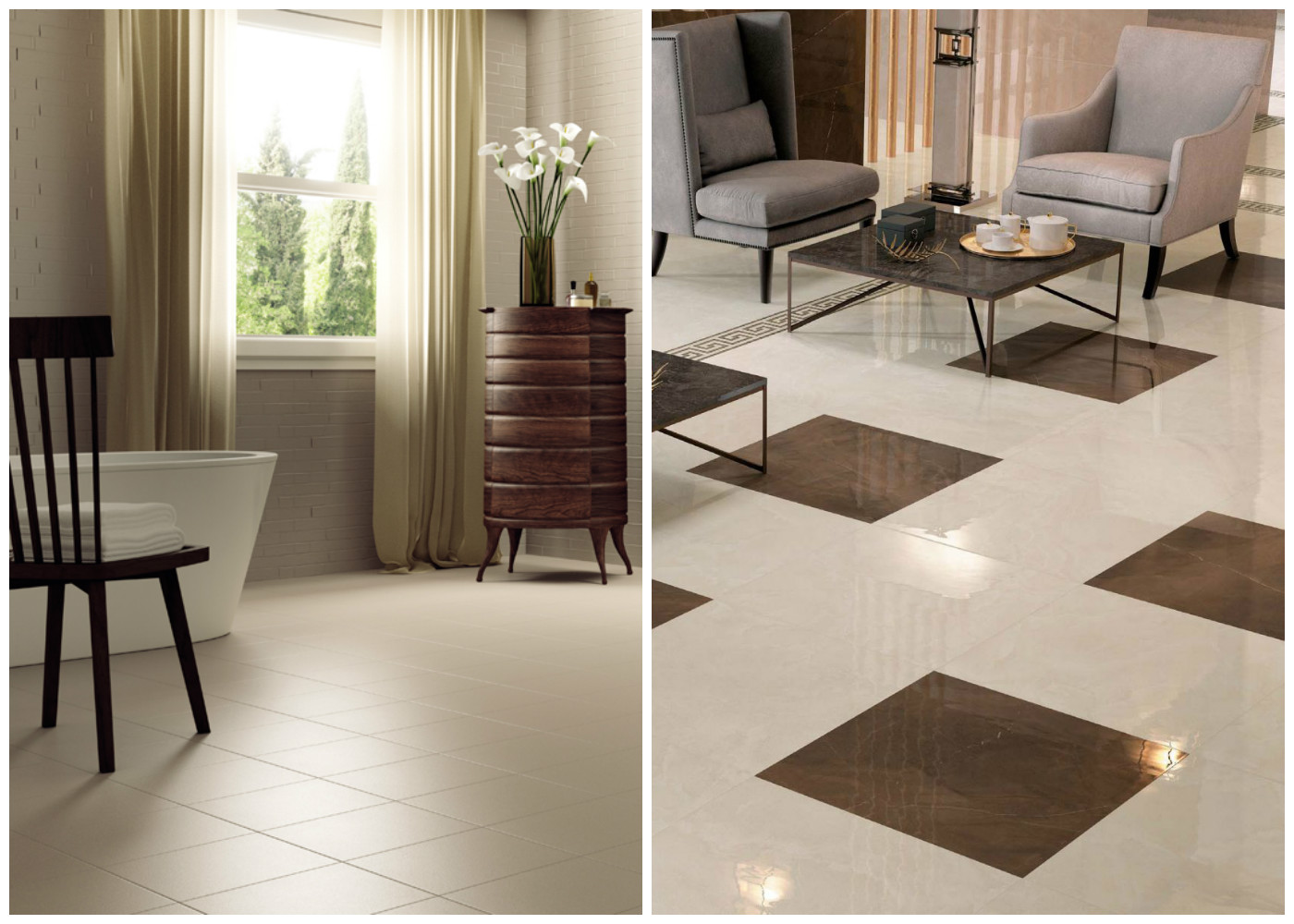
Examples of satin and lapped floor ceramics
Tile shape:
- square;
- a set of non-standard elements (angular, polyhedra, etc.);
- mosaic;
- decorative inserts;
- separating friezes
- rectangular panels and miniature bricks.
The size of fragments for cladding on average varies from 50x50 mm to 900x900 mm. Nevertheless, there are also more dimensional products, and a small mosaic of 1 cm.
Floor layout
If we consider the options for decorating rooms with a tile facing, it's best to begin with the principles of arrangement of the floors. Traditionally, special floor ceramics are used, however, modern design the interior is increasingly supplemented with ceramic granite because of its remarkable qualities.
The main requirement is for the choice of floor covering: its dimensions should correspond to the area of the room. That is, too large elements, for example, in the toilet, look out of place and only emphasize the lack of limited space. The middle tile and the scheme for visual expansion of the zone are suitable here.
Ways of laying floors from ceramic tiles:
- Seam in the seam. This is a standard principle.
- To the outbreak. The joints move relative to each other for a distance of half a element.
- Diagonally. This is difficult to perform, but an advantageous composition, as the room visually becomes larger in all directions.
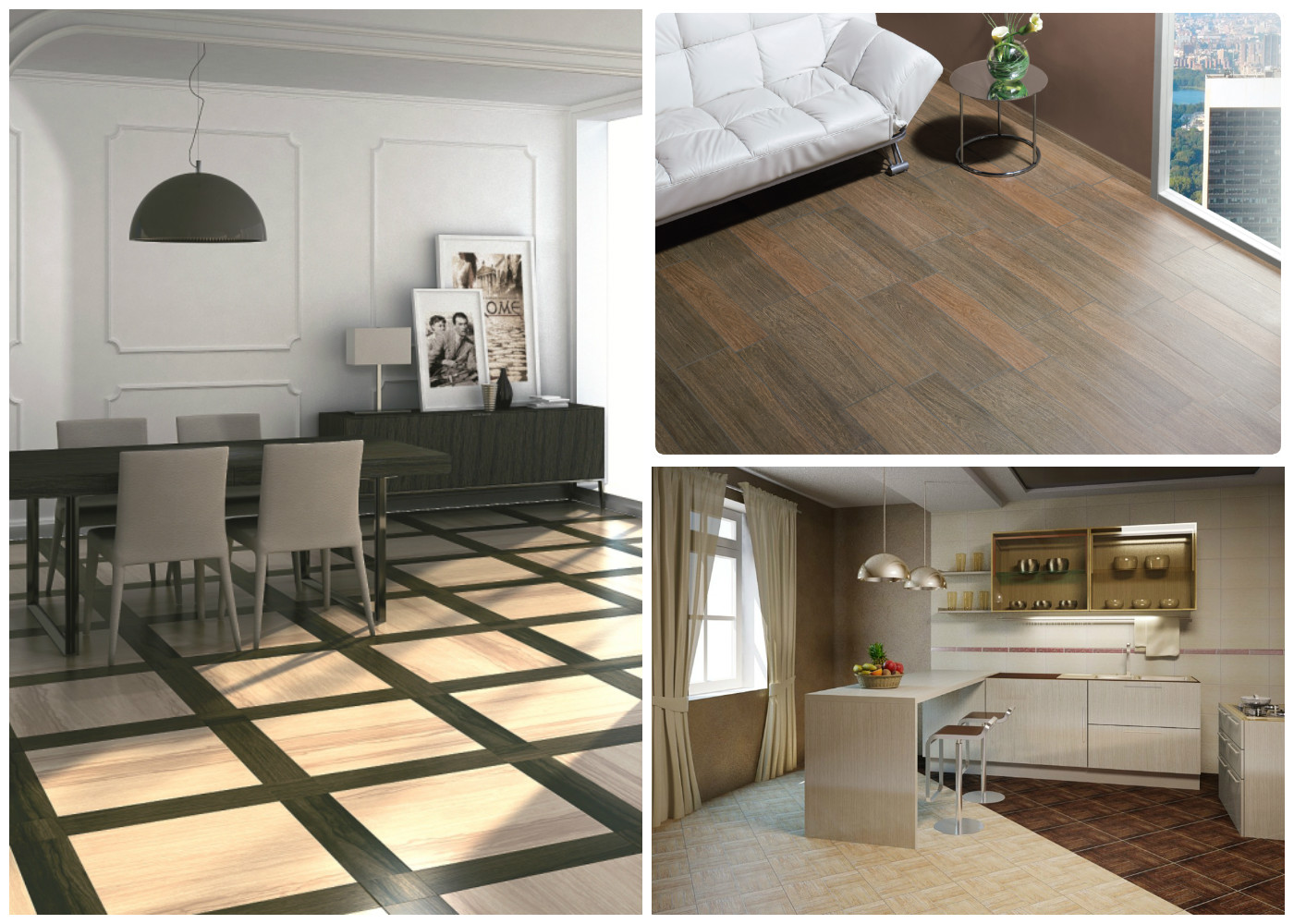
Layout options
Note that on the floor you can place a rectangular tile, this allows you to strengthen the expansion effect in the direction of the longer side of the tile.
If you use different color or size fragments, you can create a composition on the floor. This can be a simple ornament or a laconic frame around the perimeter, the use of accent inserts or the drawing of a picture, which looks good on large areas.
Design of walls
Layout of the layout:
- Seam in the seam.
- To the outbreak. Stacking with offset is used for rectangular tiles.
- Strips. The simplest method decorate a monophonic wall, using prominent tile inserts.
- Ornament. From small fragments create a pattern or a repeating motif.
- Chaotic keyboard. A similar design is used when imitating a stone wall.
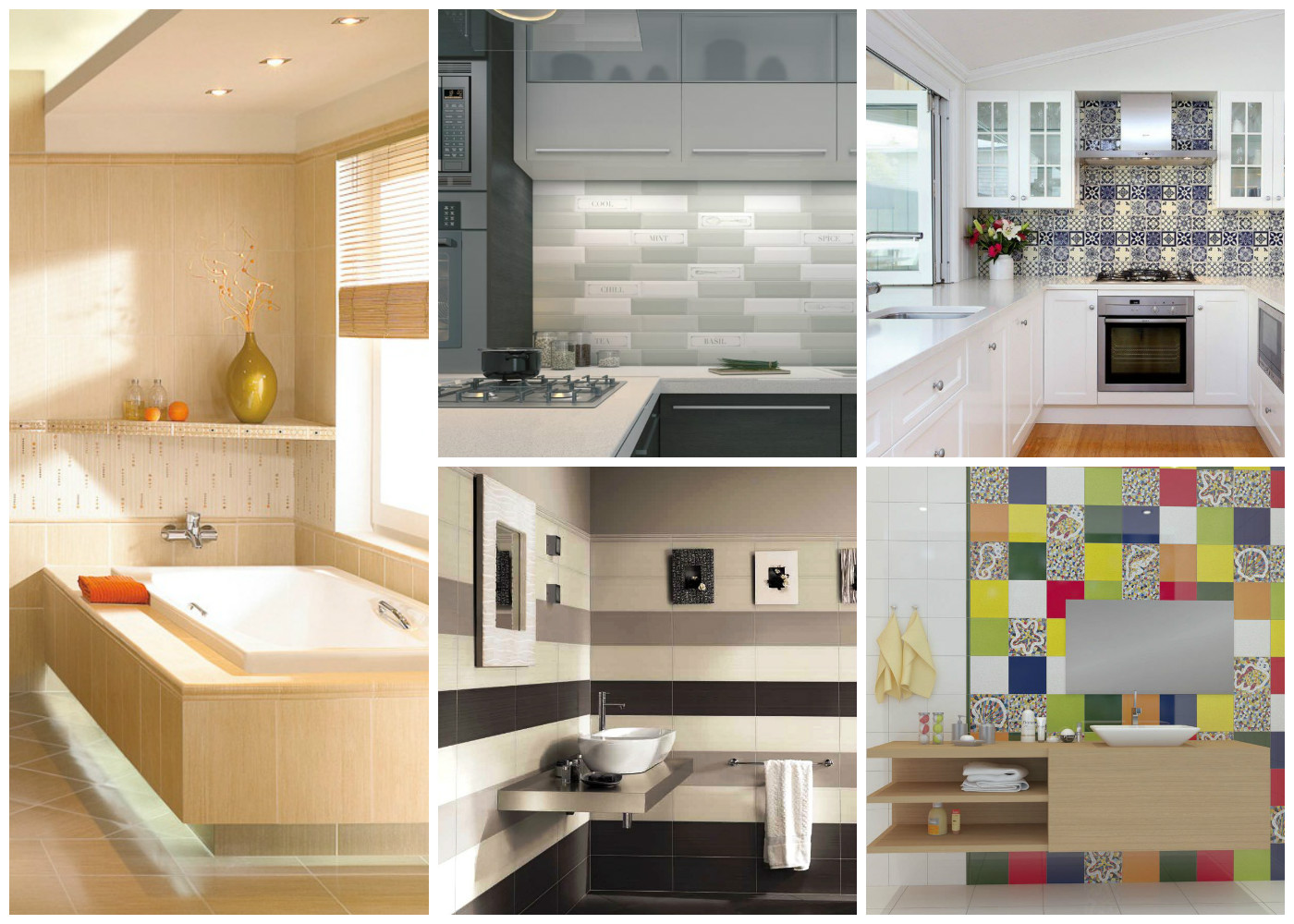
Schematic options
Color design is selected for a specific interior. For small rooms with poor lighting, the only correct option is a light tile. Use a combination within one palette or play in contrast.
Interior design of the bathroom and toilet
There is enough ordinary ceramics. The wear-resistance class is limited to the second-third category.
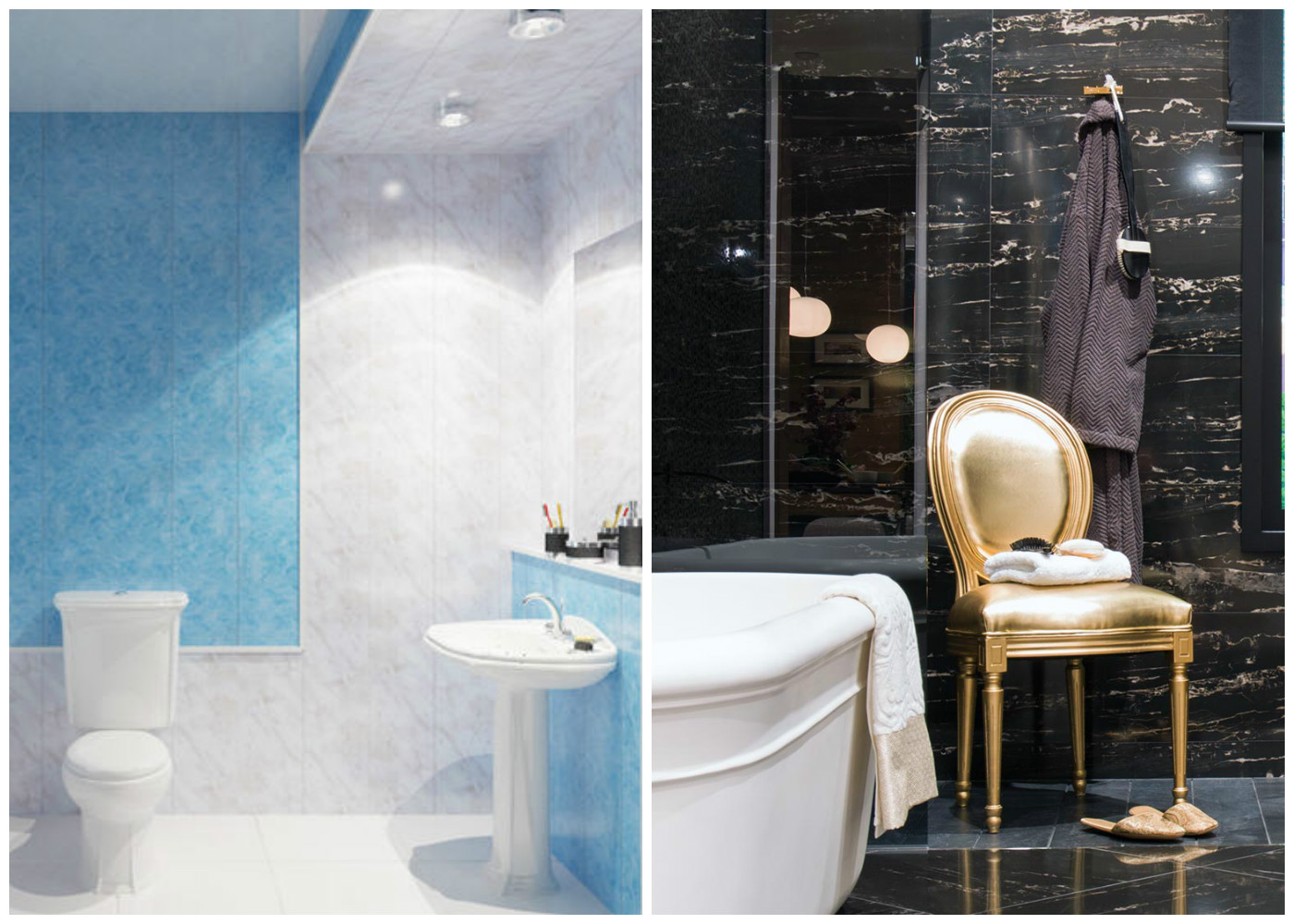
With the help of tile can create any interior, from the traditional to the avant-garde
The standard option is to use square tiles on the floor and rectangles for the walls. The size of the cladding elements depends on the area of the room.
Palette in the interior of the toilet is not limited. Already classic was the contrast combination in the context of a single scale. For example, the bottom becomes dark, and the top - light. Used and complex compositions, from which patterns and drawings are created, but such a veneer is expensive. Popular combinations:
- blue-blue;
- pink and peach;
- sand and turquoise;
- white and red.
Trendy options - a combination of black and gold, berry shades, green, yellow and orange. For small rooms, light colors will be successful.
Kitchen Design
Here it is worth to distinguish two main directions - floors and walls. In the first case they often put ceramic granite. This material is resistant to mechanical damage. For walls it is better to use tile. It's about finishing the apron.
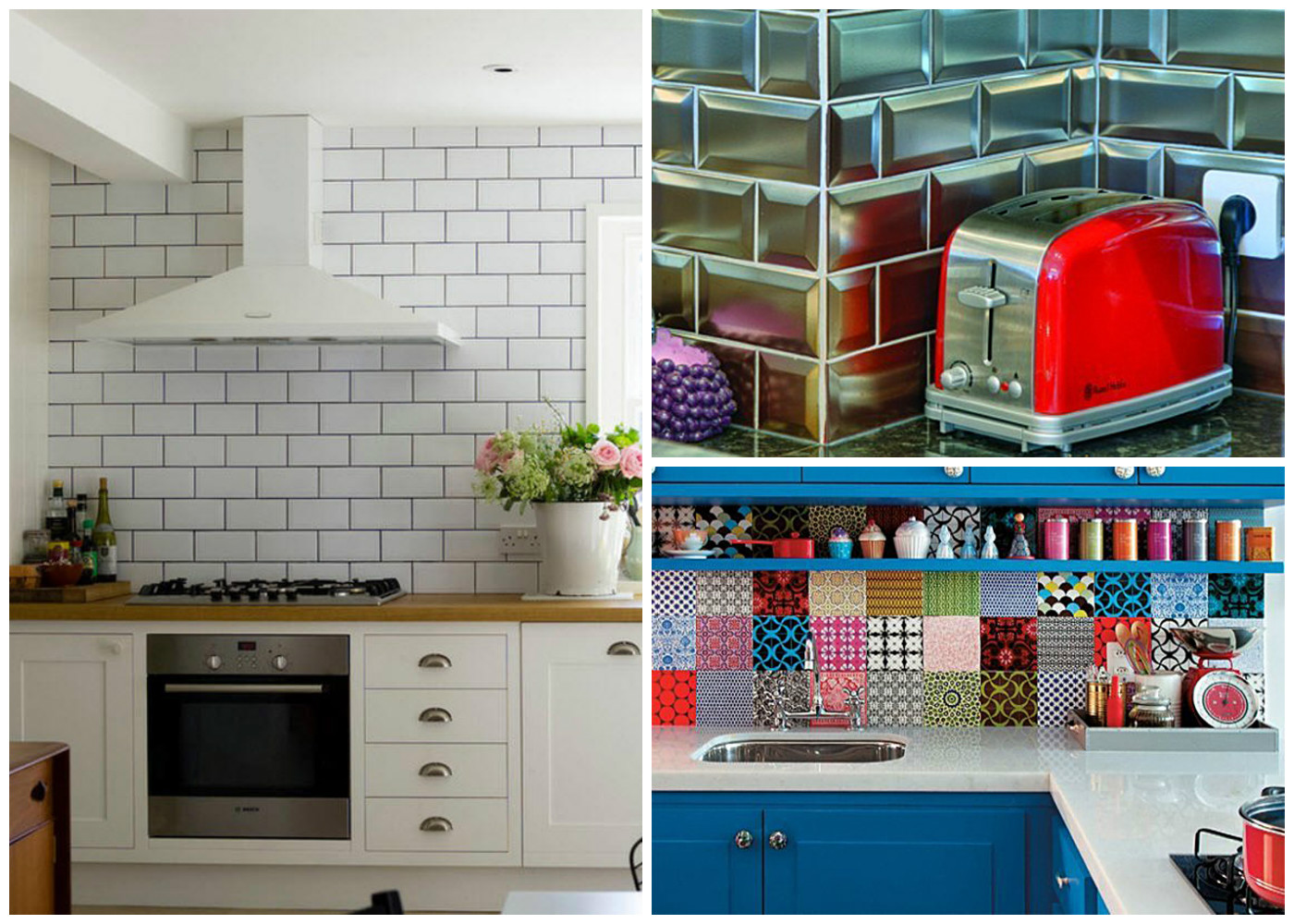
In the kitchen, a working area is decorated with tiles
Here, mosaic fragments or rectangular details are used. With their help a monochrome neat surface is created. White color is a universal option. Make accent inserts or select bright grout.
Original looks complex composition, imitating a panel, individual tiles form a picture.
For the sex, such complexity is useless. Universal beige scale is used here. Imitations of stone, marble or wood became popular. Rectangular porcelain stoneware will replace the laminate flooring.
